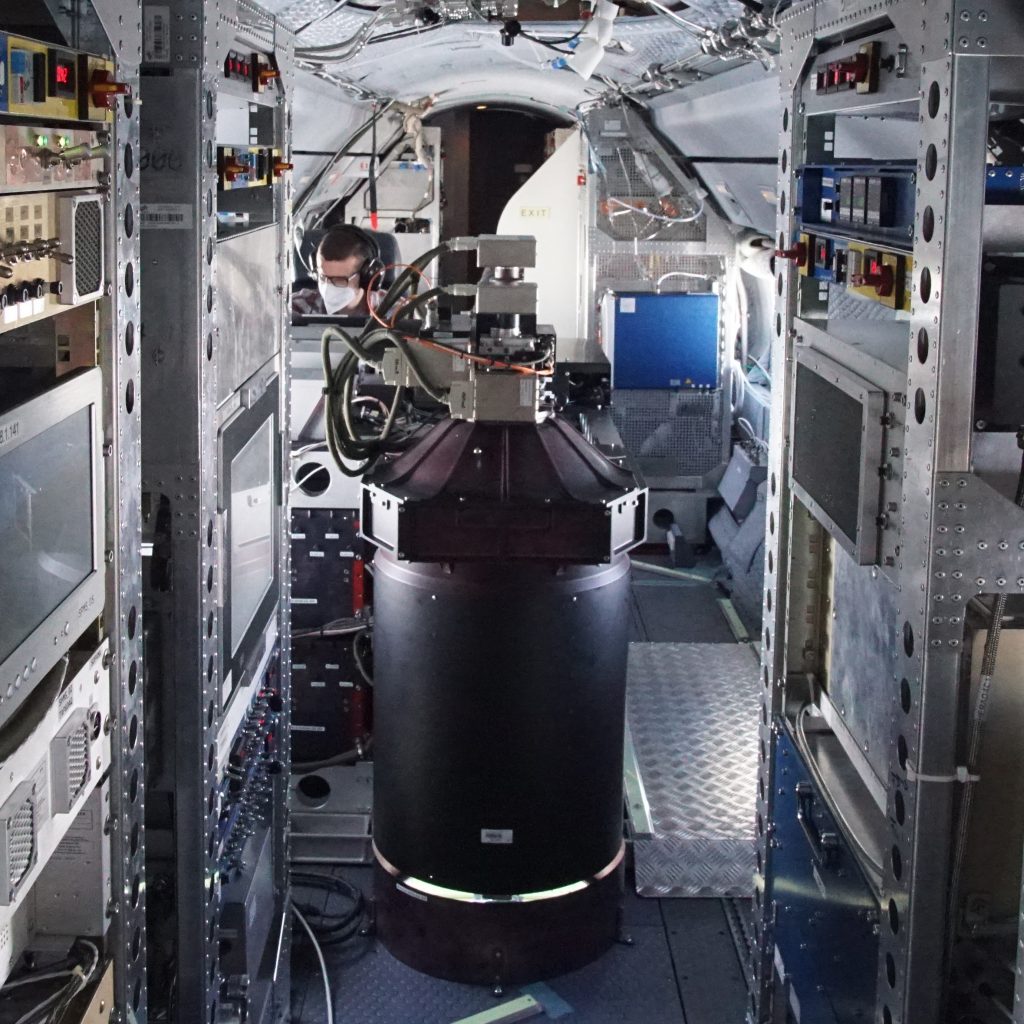The CIRRUS-HL campaign is a joint atmospheric research project by German research centres and universities within the DFG HALO-SPP 1294 framework. The experiment deploys the research aircraft HALO together with satellites and models to gain new insights into nucleation, properties, and climate impact of ice clouds in high latitudes, hence in a region of the world with strongest anthropogenic increase in surface temperatures. Aviation effects on clouds and contrail impact on climate will be studied in flight above Central Europe and the North Atlantic flight corridor.
Most rapid climate change occurs in high latitudes. Here, ice clouds exert a substantial positive forcing onto surface temperatures. However, direct observations of cirrus properties in high latitudes and their variability are sparse, and ice clouds and related aerosol effects are not adequately represented in today’s climate models which currently limits our understanding of cirrus effects on climate.
Aviation at present contributes with 3 to 4 % to the total anthropogenic effective radiative forcing (Lee et al., 2021). More than half of the effective forcing results from contrail cirrus, about a third from aviation’s CO2 emissions, together contributing more than 90 % to the total climate impact from aviation. Only a low number of flights in so-called contrail hot spots have large share on the energy forcing and the related warming by contrail cirrus. As a demo experiment, it is a goal of the CIRRUS-HL mission to investigate the contrail hot spots and the potential for climate impact reduction by avoiding those regions. Also the effect of day time contrail cooling will be investigated.
CIRRUS-HL, the only HALO cloud mission combining in situ and remote sensing cloud instrumentations since 2014, uses state-of-the-art cloud probes, and novel ice residual, aerosol, trace gas and radiation instruments to investigate nucleation, life cycle and radiative impact of ice clouds in high latitudes and of anthropogenic contrail cirrus. The aircraft observations are accompanied by remote sensing from satellite and by numerical simulations with global and process-based models. The campaign is complementary linked to international polar research activities by focusing on the physics of ice clouds and anthropogenic perturbations.
From June to July 2021, HALO performs flights in the Arctic and Northern Europe with a focus on high-latitude cirrus induced by different meteorological regimes including synoptic cirrus with slow updrafts, frontal or warm conveyor belt cirrus with moderate updrafts and orographic or convective cirrus characterized by high updrafts. A differentiation is made between in situ cirrus which formed homogeneously or heterogeneously at temperatures below 238 K and liquid origin cirrus. To get more insight into liquid origin cirrus and ice nucleation, mixed phase and ice clouds are also probed at temperatures above 238 K.
In addition microphysical and optical properties of contrail cirrus will be investigated and the diurnal evolution of the radiative impact will be measured.
Hence, CIRRUS-HL provides
- comprehensive observations of microphysical properties of ice clouds and their variability in the poorly probed high latitudes for process studies as well as satellite and model evaluation,
- new insights into aerosol transport into the Arctic and heterogeneous ice nucleation,
- observations of radiative properties of ice clouds in high latitudes in summer,
- novel observation on contrail cirrus properties in contrail hot spots, and
- first airborne experimental data on soot effects on cirrus.
Summarized, CIRRUS-HL provides a comprehensive data set on contrail cirrus and ice clouds in high latitudes to enhance our understanding of their climate impact.

Instruments from left: PHIPS, CCP, NIXE/CAPS, MTP 
Instruments from left: PIP, SID3, PCASP, CAS-DPOL 
Remote sensing with the WALES lidar 
Counterflow Virtual Impactor (CVI) inlet


